Being a kid should be magical, filled with wonder, adventure and fun. But for millions of children living in the world’s most dangerous places, childhood is often the first thing to go.
These places are so dangerous that, for children and families, each day is an intense struggle to stay alive. Conflict, droughts, flooding, exclusion and inequality form layer upon layer of impossible barriers to escaping chronic poverty and vulnerability.
Children suffer extreme levels of abuse, exploitation and violence, often for generations, and face high levels of food insecurity, hunger and malnutrition. Natural disasters and climate change worsen existing problems or cause new ones.
In these places, institutions with a responsibility to care for children and their families are often unable or unwilling to do so.
World Vision is working in these hard to reach places, determined to honour, protect and restore the childhoods of girls and boys around the world.
Here are 10 of the most dangerous places to be a child:
Afghanistan
Canadians are familiar with Afghanistan based on nearly 14 years of Canada’s military presence there. Lesser known though is that severe drought and ongoing conflict are at the top of the list of current challenges for families in Afghanistan.
The lengthy drought followed by flash flooding has decimated farmers’ crops and livestock in the largely agriculture-based economy, triggering crisis levels of food insecurity for 13.5 million Afghans, and pushing hundreds of thousands of the most vulnerable children and families from their homes in search of emergency assistance.
Girls are most vulnerable here, as desperation is pushing some families to marry off their daughters,
like 14-year-old Benesh, in exchange for a “bride price” and to reduce the number of mouths to feed.
Democratic Republic of Congo
Conflict and displacement, made worse by severe flooding and
a deadly Ebola outbreak, have made the Democratic Republic of Congo (DRC) one of the worst places to be a child.
Conflict in the resource-rich country has persisted for decades, particularly in the north, south and east, forcing millions of vulnerable children and families to flee. At the same time, more than 500,000 people have sought refuge in the DRC because of ongoing conflict in neighbouring countries.
Women and children displaced by violence are bearing the brunt of it all, escaping to remote places in search of safety, and losing access to health care, clean water, food and education in the process.
As many as 10,000 children have been used by militia groups as cooks, “wives” for officers,
child soldiers or as human shields. This long-term exposure to violence has far-reaching effects on the social, emotional, cognitive and spiritual well-being of children –
children like Marie.
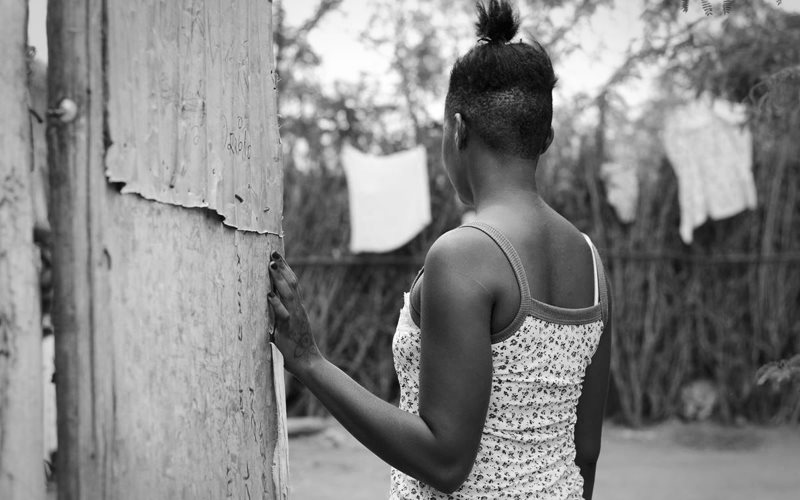 Marie was abducted at 15 and forced into marriage to a militia officer. After three years she made her harrowing escape. But without family, where can she go? Photo: Mark Nonkes
Marie was abducted at 15 and forced into marriage to a militia officer. After three years she made her harrowing escape. But without family, where can she go? Photo: Mark Nonkes
South Sudan
After decades of civil war,
South Sudan gained independence in 2010, but has only known relative peace for two years since.
Extreme poverty and ongoing ethnic tensions and political instability reignited civil war in 2013, causing one in five people to flee their homes. This, combined with steadily encroaching Sahel and regular flooding due to climate change, has led to
famine and pushed hundreds of thousands to the brink of starvation, with 270,000 children in South Sudan suffering extreme malnutrition.
An entire generation of children has grown up in conflict, without access to education, including more than 19,000 children who have been used as child soldiers –
children like Agnes.
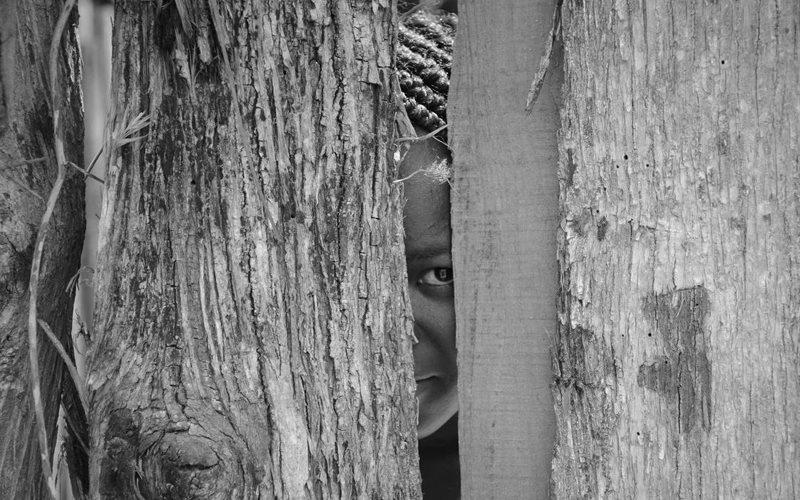 Agnes was abducted at 13 and forced into combat as a child soldier in South Sudan. Five years later she was released and is now learning to rejoin society. Photo: Mark Nonkes
Agnes was abducted at 13 and forced into combat as a child soldier in South Sudan. Five years later she was released and is now learning to rejoin society. Photo: Mark Nonkes
Burundi
In Burundi, ongoing conflict, coupled with the very real risk of malaria, malnutrition and natural disasters like the severe flooding in 2018, is
driving hundreds of thousands of the most vulnerable from their homes.
Ethnic tensions leading to genocide in both 1972 and 1993, as well as political instability going back decades has meant a decline in access to education, health care and employment. In the process, children have been separated from their families, used as child soldiers, forced into marriage or child labour, and faced with physical, and sexual and gender-based violence.
Though Burundi has not fully stabilized, families who fled to neighbouring countries for safety are starting to return through a repatriation agreement between Kenya and Tanzania, the two countries hosting the largest number of Burundian refugees. These families are hoping for a better future for their children.
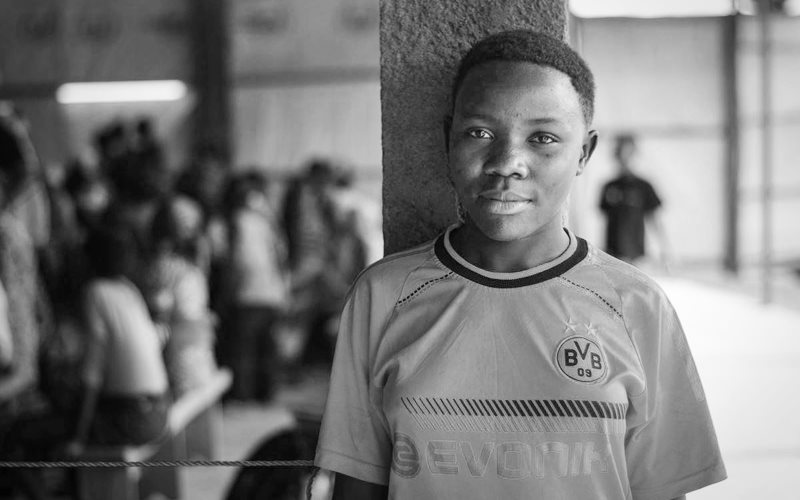 Jehovanise fled conflict, malaria and flooding in Burundi. They lived in Tanzania for three years, but life in the refugee camp is hard. They've returned to Burundi seeking hope for a better future, but is it too soon? Photo: Mark Nonkes
Jehovanise fled conflict, malaria and flooding in Burundi. They lived in Tanzania for three years, but life in the refugee camp is hard. They've returned to Burundi seeking hope for a better future, but is it too soon? Photo: Mark Nonkes
Somalia
In Somalia, a 10-year civil war combined with regular periods of extreme drought, followed by flooding, has displaced 2.6 million children and families. This decade of instability has completely eroded basic services like health care, education, water and sanitation.
Drought and flooding have left traditionally nomadic families without herds to raise and without livelihoods to feed their families. Seeking emergency food assistance, clean water and safety, they make their way to camps for internally displaced people. But living in such close proximity brings further vulnerabilities, including safety for girls and outbreaks of disease like tuberculosis and polio.
Now families are facing crisis levels of food insecurity, with the UN projecting 1.2 million children will be malnourished this year –
children like Amina.
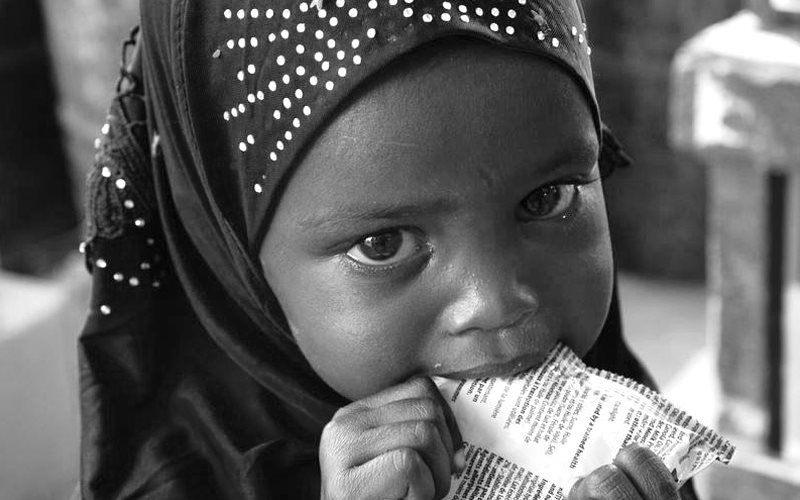 Amina is just two years old and severely malnourished. Her family lost everything in the drought. At this mobile health clinic, she's given ready-to-use therapeutic food, but what does her future hold? Photo: Brett Tarver
Amina is just two years old and severely malnourished. Her family lost everything in the drought. At this mobile health clinic, she's given ready-to-use therapeutic food, but what does her future hold? Photo: Brett Tarver
Central African Republic
Central African Republic (CAR) is one of the world’s poorest countries, and one of the most forgotten crises. After decades of political instability, renewed clashes with armed groups in 2017 has left children particularly vulnerable to malnutrition, abuse and outbreaks of disease.
With a population of just five million, fully half need emergency assistance. Over a million children and families have been displaced, 68 per cent of girls are married before the age of 18 and more than 14,000 children have been used as child soldiers –
children like Lionel.
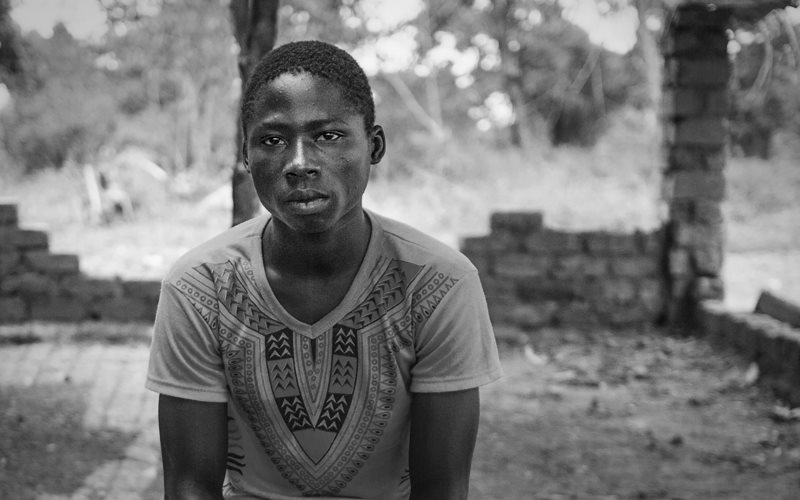 When soldiers attacked his community and killed his parents, Lionel volunteered himself to a rival militia group. He was just 11 years old, and he did it to stay alive. Photo: Chelsea Maclachlan
When soldiers attacked his community and killed his parents, Lionel volunteered himself to a rival militia group. He was just 11 years old, and he did it to stay alive. Photo: Chelsea Maclachlan
Iraq
Oil. Desert Storm. Weapons of Mass Destruction. This is what many of us think about when we think of Iraq. Mired in conflict since the 1990s, ISIS is the latest in a long line of threats to children and families in the country. Add to that political instability and low oil prices over the years, and you have a derailed economy that’s left many families in precarious situations.
2.1 million people have been forced from their homes seeking shelter wherever they can find it, whether in camps or abandoned buildings. In July 2017, Iraqi forces successfully took back the city of Mosul sending ISIS on the run and freeing the families who had been held captive there. But what happens now? Prolonged exposure to violence takes a toll, leaving many children to carry the scars of war –
children like Raja.
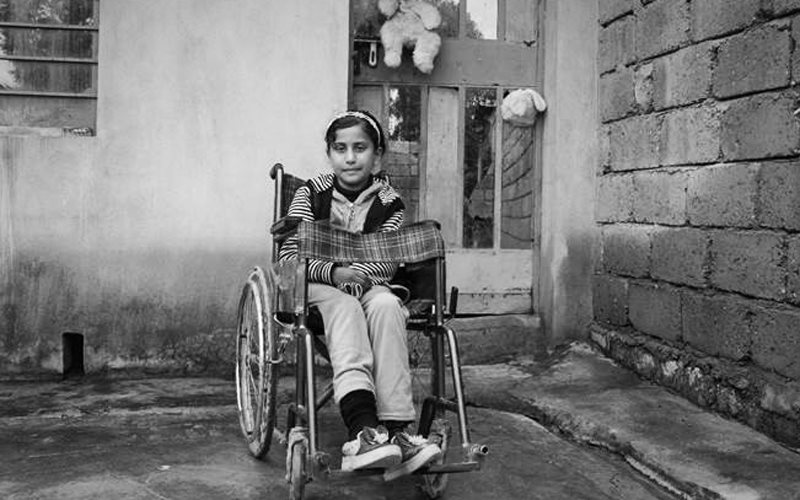 Ten-year-old Raja was badly injured by a bomb during the battle for Mosul. She lost her left hand and is unable to walk. How will she overcome the physical and emotional scars of war? Photo: Brett Tarver
Ten-year-old Raja was badly injured by a bomb during the battle for Mosul. She lost her left hand and is unable to walk. How will she overcome the physical and emotional scars of war? Photo: Brett Tarver
Pakistan
A long history of conflict, political instability, severe drought, flooding and landslides in the mountainous regions are just some of the layers that make Pakistan difficult for children.
Pakistan is host to more than 1.4 million Afghan refugees – 58 per cent of whom are children. Added to that, more than 249,000 Pakistanis have been displaced due to ongoing regional conflict and natural disasters typically in the rural areas forcing them to seek safety and opportunity in the urban areas. At least 5.3 million children are not in school and it’s estimated that 12.5 million children are
engaged in child labour –
children like Shahid.
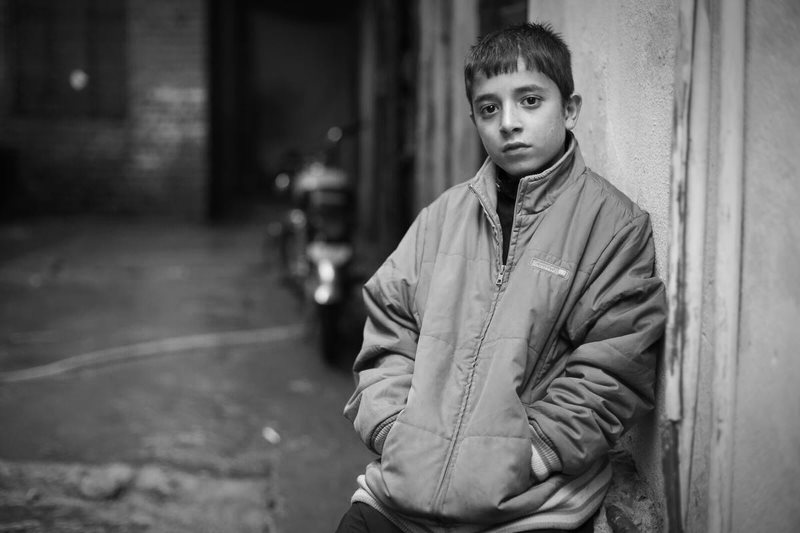 Nine-year-old Shahid started working nights with his dad when his parents could no longer afford school fees. He's angry and scared about his future, but what choice does he have? Photo: Stefani Glinski
Nine-year-old Shahid started working nights with his dad when his parents could no longer afford school fees. He's angry and scared about his future, but what choice does he have? Photo: Stefani Glinski
Sudan
In 2006 the 22-year civil war came to an end and led to the creation of South Sudan. It was one of the longest civil wars on record, and the second in Sudan’s history, and forced many children and families to flee their homes for safety.
Political instability, and a skyrocketing cost of living has all but blocked the most vulnerable from accessing the basics – food, water, shelter, health care and education. Climate change compounds the situation with regular periods of drought followed by flooding, with the added danger of outbreaks of measles and yellow fever.
These layers of instability have forced still more to seek refuge in neighbouring countries like Kenya, the second largest host country for refugees in Africa. Seeking safety, and emergency assistance, they make their way to camps like Kakuma, but what happens to children in these situations?
Children like Nesadin.
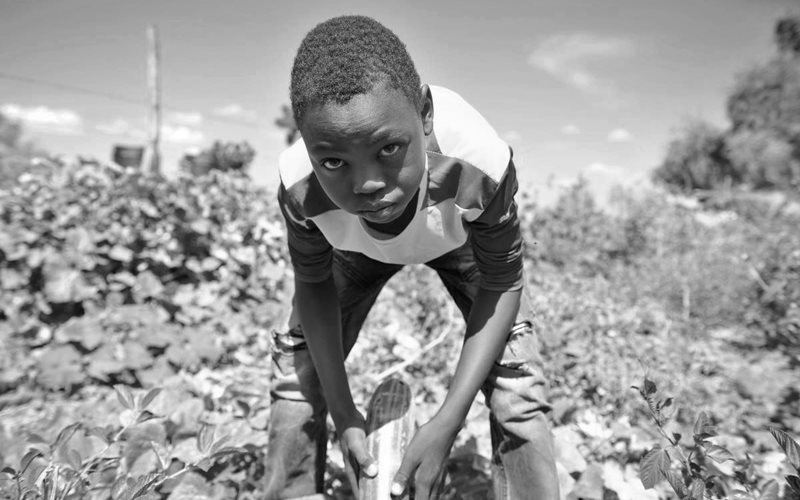 Nesadin and his family escaped conflict in Sudan for a refugee camp in Kenya. But what does the future hold for a boy growing up in a refugee camp? Photo: Zipporah Karani
Nesadin and his family escaped conflict in Sudan for a refugee camp in Kenya. But what does the future hold for a boy growing up in a refugee camp? Photo: Zipporah Karani
Syria
Conflict in Syria started in 2011 and went largely unnoticed until September 2015 when the death of three-year-old Alan Kurdi captured global attention. Now in its ninth year, the Syrian refugee crisis is recognized internationally as the largest refugee crisis of our time. Civil war has set Syria’s national standard of living back by decades – destroying health care systems, schools and water and sanitation facilities.
Hundreds of thousands of people have died, 5.6 million Syrians have fled the country as refugees and another 6.6 million Syrians, including 2.5 million children, are displaced within the country. Half of those affected are innocent children. These Syrian children have witnessed atrocious forms of violence – and are the most affected by this war - children like Shames.
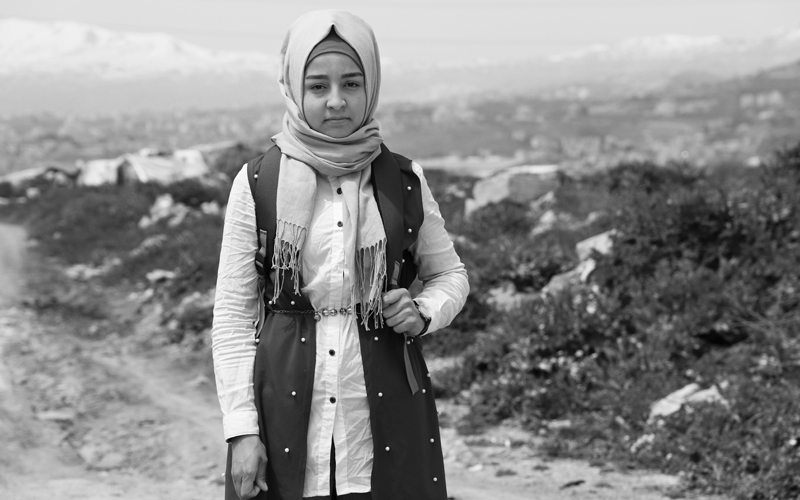
17-year-old Shames and her mother lost everything when they fled civil war in Syria. Now they live as refugees in the Bekaa Valley in Lebanon. She worries about her mother's health, and how they will make ends meet from day to day. One day she hopes to return to Syria and complete her education, but for now it's out of reach. Photo: Josephine Haddad
What do I do now?
If you’ve reached the end of this long list, it would be easy to feel helpless, to see the problems as too big to solve. But there is hope. World Vision goes to these dangerous places and works with local community leaders to build peacebuilding skills, and to meet the immediate needs of the most vulnerable so that every child can have the chance at a full life no matter where they live.
Global poverty is in retreat but has become more concentrated in the world’s darkest places. Over the next decade, more than 80 per cent of the world’s poorest children and families will live in the most dangerous places where lives and futures are threatened by conflict and disaster. Join the movement and take action against injustice. Learn how you can help.
With files from Alicia Dubay.